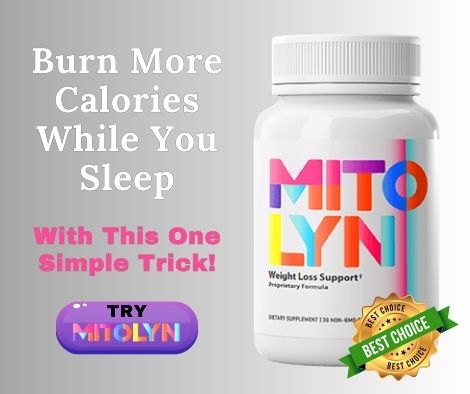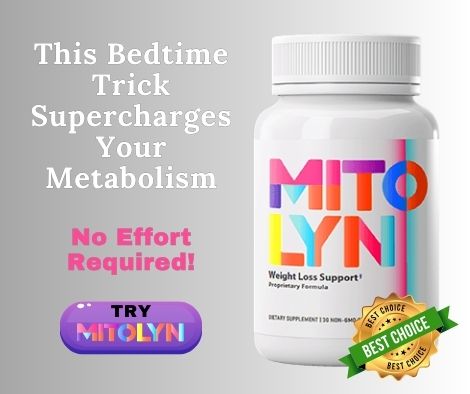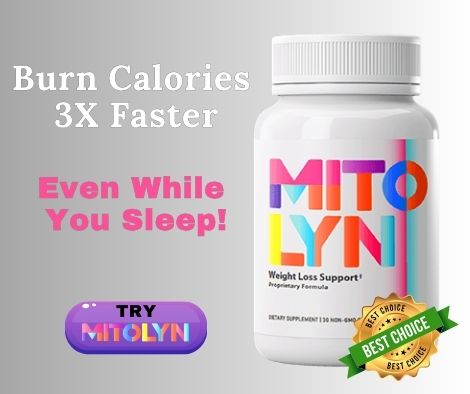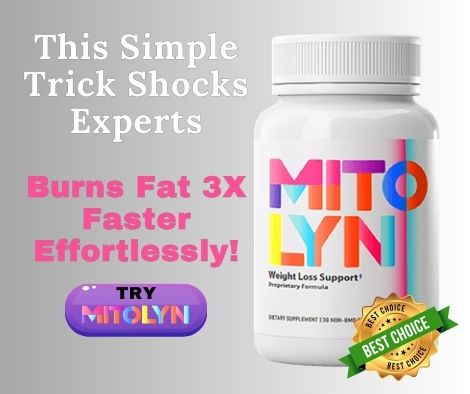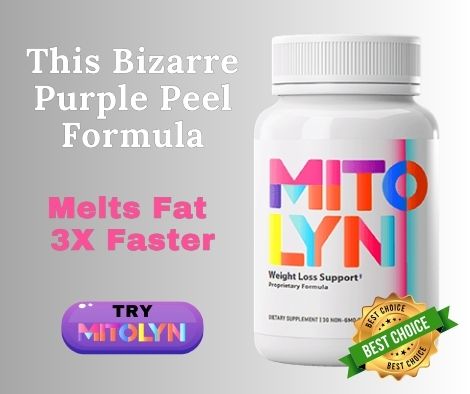Tyler, a 26-year-old marathon runner, collapsed at mile 18 during a Phoenix race. Perfect health, perfect training, perfect hydration plan. What killed him wasn't the heat—it was trusting sports drink marketing over basic physiology. He'd been drinking Gatorade every 15 minutes, diluting his blood sodium to dangerous levels.
Your air conditioning bill is through the roof. You're chugging ice water like it's your job. And you still feel like you're melting into the pavement every time you step outside.
In 2022, a single weeklong heatwave in Europe killed over 61,000 people. Most died from preventable heat stress and dehydration. A Harvard study found that even mild temperature increases spike hospital visits for kidney failure, confusion, and heart problems. Your cognitive function drops 13% when you're overheated—reaction times slow, judgment fails, accidents happen.
Heat kills more people than hurricanes, tornadoes, and floods combined. While you're casually shrugging off rising temperatures, heat is silently destroying your physical health, mental performance, and mood. Heat stroke happens when your core temperature hits 104°F, causing neurological damage that can be permanent.
Know Your Danger Zones
- 80-90°F: Caution - hydrate more, dress lighter
- 90-105°F: Extreme caution - limit outdoor time, watch for symptoms
- 105°F+: Emergency territory - indoor protocols only
A 2023 Harvard T.H. Chan study of 10,000 workers found cognitive performance drops 13% in overheated conditions, costing companies an average of $2,000 per employee in lost productivity during heat waves.
During record-breaking heat in Tokyo, office workers keep battery fans and cold saline drinks on every desk. In Madrid, cafes stay packed until midnight while streets empty during afternoon siesta. In Sydney, joggers fill parks before sunrise, and city buses warn passengers to bring water bottles.
These are survival strategies refined over generations.
Here's the thing nobody wants to admit: most people are doing summer survival completely wrong. They're fighting their biology instead of working with it. They're throwing money at gadgets instead of understanding how heat actually affects the human body.
Summer doesn't have to be three months of misery. But it requires you to think differently about cooling down.
Rate Your Heat Stupidity (Be Honest)
- Do you drink coffee or alcohol in 95°F+ weather? (+2 points)
- Wear dark jeans to outdoor summer events? (+2 points)
- Trust thirst as your hydration guide? (+1 point)
- Think sweating means your cooling system is broken? (+2 points)
- Skip breakfast on hot days to "stay cool"? (+1 point)
Score 0-2: You get it. 3-5: You're sabotaging yourself. 6+: You're a heat stroke waiting to happen.
Your Body's Cooling System Is Smarter Than You Think
Your body has been perfecting temperature regulation for millions of years. Sweating is engineering, pure and simple. When sweat evaporates from your skin, it pulls heat away through evaporative cooling—your primary defense against heat.
Most people sabotage this process without realizing it. Tight synthetic clothes trap sweat against your skin. Zero evaporation means zero cooling. You're wearing a wetsuit in July. When humidity rises above 70%, evaporation slows dramatically, making your internal cooling less efficient.
Constant cold showers backfire. Your body compensates by generating more internal heat afterward. You end up hotter than when you started.
Strategic cooling works with your physiology, not against it.
Hydration: Beyond Water
Forget the "8 glasses a day" bullshit. Just a 2% drop in body water saps energy, slows mental processing, and stresses your kidneys and heart. The elderly, young children, and outdoor workers face the highest risk—their thirst cues are unreliable.
The Real Formula
In hot weather, you need half your body weight in ounces, plus 16-24 ounces for every hour outdoors. A 160-pound person needs 80 ounces baseline, plus extra for heat exposure.
Add a pinch of sea salt to every second glass. Sodium helps your cells actually absorb the water. Skip the salt and you're making expensive urine.
Weigh yourself before and after any outdoor activity. Every pound lost equals 16 ounces of fluid to replace. Your body doesn't lie about dehydration.
Beyond Plain Water
Heavy sweating during exercise flushes out electrolytes crucial for muscle function and nerve signaling. Drinking plain water excessively dilutes these minerals, causing hyponatremia—low sodium that can be fatal.
Try coconut water, or make your own solution: water, fresh lemon juice, pinch of sea salt, and honey. For a more satisfying option, crack open a young coconut and blend the water with the coconut meat and banana, or half an avocado, or blueberries, plus a pinch of sea salt. Order young coconuts and opener tool set from Weee!—fresh coconut water has 3x the electrolytes of bottled versions for half the price. Yummy and perfectly balanced for hydration.
Skip the expensive "hydration" powders with artificial flavors. Grab Redmond Real Salt or Celtic Sea Salt for pennies per serving. For ready-made options, Harmless Harvest Coconut Water delivers pure electrolytes without the sugar crash of sports drinks.
Ancient civilizations from India to Greece consumed salted beverages during hot weather. Modern science confirms this maintains electrolyte balance.
In Spain, "agua de cebada"—barley water with lemon—remains a summer staple. In rural India, families cool water naturally in porous earthenware "matka" pots that drop temperature several degrees without electricity.
Pulse Point Cooling
Your wrists, neck, and ankles have blood vessels close to the surface. Cool these spots and you cool your entire circulatory system. Run cold water over your wrists for 30 seconds—instant relief that lasts 20 minutes.
Ice packs on the back of your neck work better than anywhere else. The carotid arteries carry cooled blood straight to your brain. Your core temperature drops within minutes.
Military heat training protocols focus on these exact pulse points. Special Forces operatives in desert climates use this technique to maintain performance in 120°F+ conditions.
30-Second Heat Hack: Try This Right Now
If you're reading this and feeling warm, run cold water over your wrists for 30 seconds. Notice how the cooling sensation travels up your arms within 60 seconds. That's your circulatory system doing exactly what it's designed to do.
The Clothing Game Changer
Linen and lightweight cotton aren't just fashion choices—they're survival gear. These fabrics let air flow and sweat evaporate. A loose linen shirt beats a tight cotton t-shirt every time.
Light colors reflect heat. Dark colors absorb it. Wearing black in summer is like carrying a portable heater.
Urban Heat Management: Surviving Concrete Jungles
Cities amplify heat through the "urban heat island" effect—asphalt, concrete, and buildings trap and radiate heat. Cities like Los Angeles pilot "cool pavements" and rooftop gardens, lowering local temperatures by several degrees. In Athens, Greece, public misting stations and shade trees line walkways.
A New York bike courier rides with a mesh backpack, cooling towel, and frozen water bottle wrapped in a t-shirt—double duty as hydration and neck cooler. In Tel Aviv, shaded bus stops with integrated misters line busy boulevards.
Street-Level Survival Gear
Reflective umbrellas, moisture-wicking clothing, and portable handheld fans provide practical relief on crowded streets or public transportation. Rechargeable USB mini-fans, cooling towels, and folding UV umbrellas are effective for street-level relief.
For commuters facing overheated buses and subways, cooling scarves or small frozen gel packs wrapped in towels help regulate body temperature without drawing attention.
Heat Myths That Could Kill You
Myth: Cold showers cool you down
Reality: Your body compensates by generating more internal heat afterward. You end up hotter within 30 minutes. Lukewarm showers remove heat while avoiding the rebound effect.
Myth: Alcohol helps you stay cool
Reality: Alcohol dehydrates you and impairs your body's temperature regulation. Beer at the beach might feel refreshing, yet it sets you up for heat exhaustion.
Myth: Only elderly people get heat stroke
Reality: Athletes in their 20s die from heat stroke every summer. Age matters, but poor heat management kills healthy young people too.
Myth: Fans just blow hot air around
Reality: Fans create evaporative cooling when you're sweating. A $20 fan can be more effective than a $200 portable AC unit when used correctly.
The uncomfortable truth is the wellness industry lies to you about heat. They sell $40 cooling towels and $200 personal AC units because admitting that a wet bandana and strategic hydration work better would kill their profits.
Home Cooling Strategies
Smart Fan Placement
Most people point fans directly at themselves and get minimal results. Position a fan to pull hot air OUT of the room. Place it in a window facing outward during the hottest part of the day.
The exact fan setup that drops my office 12°F: Lasko tower fan in the window pulling air out, Vornado air circulator moving air around the room. Total cost under $100. Sarah from Phoenix uses the same setup.
At night, reverse it. Pull cool night air IN through windows on the shady side of your home.
DIY Air Conditioning
Fill a large bowl with ice. Position a fan to blow across the ice toward you. Instant swamp cooler for under $10 that works better than most portable AC units.
This setup drops room temperature by 8-12°F in spaces under 200 square feet. Total cost: $10 for ice, $20 for a decent fan. Compare that to $300+ monthly AC bills during peak summer.
Block Heat Before It Enters
Reflective window film cuts heat gain by 60%. Costs $20 per window and pays for itself in lower electric bills within one summer.
Gila Heat Control Window Film is what actually works—I've tested it. Takes 20 minutes to install, blocks UV and heat without making your place look like a tinted car.
Heavy curtains on south-facing windows during peak sun hours. Open them after sunset to let heat escape.
Natural Cooling Methods
In Cairo, families hang damp cotton cloths across windows to cool air as it flows into the home. In Mexico, terra-cotta tiles and thick stucco walls delay heat transfer, keeping rooms cooler deep into evening.
Keep plants like snake plants and peace lilies—they add humidity and subtly lower air temperature through evaporation. Switch incandescent bulbs for LEDs, which emit less heat.
Your Cooling Emergency Kit
Keep these items accessible in your home, car, and office:
- Instant cold packs (4-6 per location) - General Medi brand works, skip the fancy ones
- Electrolyte packets - LMNT or just bring your own salt
- Cooling towels - Frogg Toggs Chilly Pad actually stays cold
- Battery-powered fan - This handheld USB one charges in your car
- Reflective emergency blanket
- Thermometer to monitor actual temperature
- Insulated water bottle - YETI or Hydro Flask keeps water cold for hours
Total investment: $75-100. Potential savings: your life.
Food Strategy: Eating to Stay Cool
Eat Like Desert Dwellers
High-protein, heavy meals ramp up your body's heat production through thermogenesis. Water-dense produce and smaller portions ease the digestive workload and minimize internal heat generation.
Spicy food makes you sweat more, which actually cools you down through evaporation. There's a reason hot climates developed spicy cuisines. Your mouth burns, but your body temperature drops. In Vietnam's humid summers, iced herbal teas and spicy green papaya salads crowd tables.
Traditional Cooling Foods
Try "agua fresca"—a Latin American drink of blended watermelon, lime, and mint, lightly salted—to hydrate and cool. Cold soups like Spanish gazpacho or Greek cucumber-yogurt soup are traditional warm-weather staples that hydrate while replenishing minerals.
In Greece, families gather around plates of watermelon, cucumber, and feta. Market stalls in Bangkok serve fresh coconut water—small, simple foods that hydrate while limiting internal heat.
Cold foods give temporary relief but require energy to digest, generating internal heat. Room temperature foods keep you cooler longer.
Smart Hydration Timing
Drink before you're thirsty. Thirst means you're already behind. Set a timer for every 30 minutes and take 4-6 sips.
Sports drinks only if you're sweating heavily for over an hour. Otherwise, you're just drinking sugar water.
Exercise Without Dying
Early Morning or Late Evening Only
Human body temperature follows a circadian rhythm, peaking around 4-5 PM. Heat index above 90°F? Move your workout to before 10 AM or after 6 PM. Your performance drops 15% in extreme heat anyway.
If you must exercise during peak heat, do it indoors or in shade. Direct sunlight adds 10-15 degrees to the effective temperature. Check local UV index and air quality before heading out—high pollution and ozone make heat stress worse.
Recovery Protocols
Take a cool shower immediately after exercise—lukewarm works best. Lukewarm water removes heat while avoiding system shock.
Elevate your legs for 5 minutes post-workout. Helps circulation and prevents blood pooling in overheated limbs.
Workplace Cooling: Balancing Dress Codes and Survival
Research from Harvard shows productivity drops 15% for every 5°F increase above room temperature. If your employer resists climate-adaptive dress codes, point to OSHA recommendations on heat illness prevention.
A Tokyo insurance office times lunch breaks to avoid the hottest part of the day. Workers return with chilled hand towels placed on neck and wrists for instant relief. In Phoenix, delivery drivers store extra shirts and small portable fans in vehicles.
Desk-Level Solutions
Opt for business-appropriate clothing in lighter, breathable fabrics like cotton blends or moisture-wicking synthetics. Keep a cooling towel or small spray bottle with chilled water at your desk.
Mini-fans, cooling wristbands, and small desktop humidifiers boost comfort in older buildings. Pack extra shirts if you sweat heavily, and use underarm or clothing wipes to freshen up midday.
Regional Heat Management: Humidity vs. Dry Heat
High Humidity Zones (Southeast US, Gulf Coast, Tropics) Sweat evaporates poorly. Focus on air movement and staying indoors during peak hours. Dehumidifiers can make 85°F feel like 75°F.
Dry Heat Zones (Southwest US, Desert Regions) Sweat evaporates rapidly, leading to stealth dehydration. You might feel dry while losing water fast. Double your fluid intake and seek shade religiously.
Urban Heat Islands (All Major Cities) Concrete and asphalt can add 15°F to ambient temperature. Early morning exercise becomes essential—by 9 AM, city surfaces are already storing heat for the day.
Sleep in the Heat
Create Cross-Ventilation
Open windows on opposite sides of your bedroom. Even a slight breeze drops the effective temperature by 5-10 degrees.
Wet towel over an open window acts as natural evaporative cooling. Ancient technique that still works.
Body Cooling Tricks
Freeze a damp washcloth for 10 minutes. Place it on your neck or wrists before bed. Your body temperature drops enough to fall asleep easier.
Rapid Cooling Techniques: Emergency Heat Relief
Brazilian street vendors keep a "cool kit" within reach: instant cold packs, lightweight towel, electrolyte packets, and battery-powered fan. Local doctors recommend splashing cool water over pulse points—neck, wrists, temples—before going outside.
Applying cool packs or running cold water over pulse points effectively signals your brain's hypothalamus to lower core temperature. Avoid applying ice directly to skin, which can cause frostbite or nerve damage. Wrap ice packs in thin towels.
When Heat Becomes Dangerous
Heat exhaustion symptoms: heavy sweating, weakness, nausea, headache. Move to shade immediately. Drink water slowly. Apply cool cloths to neck and wrists.
Heat stroke symptoms: high body temperature, altered mental state, hot/dry skin OR heavy sweating. Call 911. This kills people.
Emergency Recovery Protocol
- Move to shade or AC immediately
- Remove excess clothing
- Apply ice packs to neck, armpits, groin (wrapped in towels)
- Fan the person while misting with cool water
- Give small sips of cool water if conscious
- Monitor breathing and consciousness
- Call 911 if temperature exceeds 103°F or symptoms worsen
Your urine color tells the truth about hydration. Clear to light yellow is good. Dark yellow means drink more water now.
Mental Cooling: Your Mind as an Ally
Mental imagery can lower perceived temperature by up to 2°F, according to neuroscience studies. Athletes and military personnel use "mental cooling scripts" to stay calm and focused in extreme heat.
In 1911, a group of British explorers got lost in the Sahara for 6 days without water. The ones who survived stripped to light cotton, rested during peak heat, and moved only at dawn and dusk. The ones who died kept their "proper" wool uniforms and tried to push through midday heat because "keeping schedule" mattered more than staying alive.
You probably prioritize social expectations over basic survival during heat waves more often than you realize.
What Heat Exhaustion Actually Feels Like
Your skin feels clammy and cool despite the heat around you. There's a creeping nausea that starts in your stomach and spreads upward. Your vision gets slightly fuzzy around the edges. You feel simultaneously exhausted and restless—like you need to sit down but can't get comfortable. Your head throbs with each heartbeat. This is your body screaming for help.
Smart Accessories: Practical Heat Management
Look for hats labeled UPF 50+. Wide-brimmed hats provide essential sun protection. Across Mexico, woven palm hats and cotton bandanas offer affordable, effective heat protection. In Italy, linen scarves are dampened and draped around necks.
The construction crews in Phoenix keep these cooling bandanas soaked in their coolers. Lightweight mesh sneakers by brands like Merrell or Adidas Ultraboost support foot ventilation. In California, surfers keep mesh slip-on shoes in cars for instant ventilation after beach days.
Cooling bandanas and neck gaiters can be chilled in water for extra relief. Consider roll-on or spray-on mineral sunscreen, which clogs pores less than oil-based lotions.
Avoid heavy, metallic jewelry that absorbs and retains heat. Opt for minimal, lightweight accessories.
Sleep in the Heat
Create Cross-Ventilation
Open windows on opposite sides of your bedroom. Even a slight breeze drops the effective temperature by 5-10 degrees.
Wet towel over an open window acts as natural evaporative cooling. Ancient technique that still works.
Body Cooling Tricks
Freeze a damp washcloth for 10 minutes. Place it on your neck or wrists before bed. Your body temperature drops enough to fall asleep easier.
Sleep with your feet outside the covers. Feet have lots of blood vessels near the surface and regulate body temperature efficiently.
Timing Activities: Maximizing Safety and Comfort
Many cities in Spain and Italy close shops from 1-4 PM for siesta during peak heat, resuming business when temperatures drop. This traditional wisdom modern lifestyles often overlook.
Schedule strenuous activities during cooler hours—early mornings or late evenings—to significantly reduce heat stress. In the Middle East, markets and work crews begin before sunrise, take breaks through high sun, and return only as temperatures drop.
Planning outdoor activities around heat patterns isn't just comfort—it's survival.
Adapting for Extreme Heat
People in apartments or mobile homes with poor ventilation are especially at risk during heat emergencies—installing even a single window fan or portable AC can make a life-or-death difference.
Communities with more green space, shade structures, and access to public cooling centers see far fewer heat-related illnesses. Encourage local leaders to fund "cool streets" with tree canopies and reflective road paint.
These strategies are moving from occasional use to daily necessity. Understanding and adopting effective heat management becomes crucial for health and productivity.
Your approach to heat affects your comfort, long-term health, and safety. By embracing proven, science-backed methods and culturally evolved wisdom, you can thrive in the heat instead of just surviving it.
Before the next heatwave hits, look at your routines, your home, and your community through a new lens. Which cooling strategy will you experiment with first?
Real Results: 30 Days of Proper Heat Management
Day 1: Sarah, a Phoenix teacher, struggled with 3 PM energy crashes and constant headaches during summer months. Her AC bill hit $400 in July.
Day 30: Following strategic hydration, pulse-point cooling, and home modifications, her energy stayed consistent through afternoon heat. Headaches disappeared. AC bill dropped to $200 through targeted cooling and better home management.
She stopped fighting her biology and started working with it.
Your 3-Day Challenge
Pick one strategy from this article. Try it for 3 days straight. Notice how your energy, mood, and comfort change. Then ask yourself: what other "common sense" assumptions about your body are actually wrong?
We're the first generation in human history that has forgotten how to live with heat. Our ancestors survived ice ages and built civilizations in deserts. We panic when the AC breaks.
Every summer, we act surprised by temperatures that killed 61,000 people in Europe alone. We treat heat like an inconvenience while it's actually a life-threatening force. Meanwhile, we're seeing more intense heat patterns each year.
Your relationship with heat determines whether you thrive or just survive summer. The Tuareg nomads, the Cairo street vendors, the Tokyo office workers—they figured out what works. They adapted. They respected the heat instead of fighting it.
You can keep throwing money at portable fans and energy drinks. You can keep pretending that wishful thinking will cool you down. Or you can start treating heat as what it is: a predictable, manageable challenge that requires intelligence plus air conditioning.
Tomorrow morning, before you reach for your phone, drink a glass of water with a pinch of salt. Feel the difference it makes in your energy, your focus, your mood. Then ask yourself: what other basic human needs am I ignoring because they seem too simple to matter?
Your body has been keeping you alive for years. Maybe it's time you started helping.
Disclosure:
As an Amazon Associate, I earn from qualifying purchases. This means that if you click on links to Amazon products in this article and make a purchase, I may receive a small commission at no extra cost to you. Thank you for supporting this site and the work that goes into providing trusted health information.

